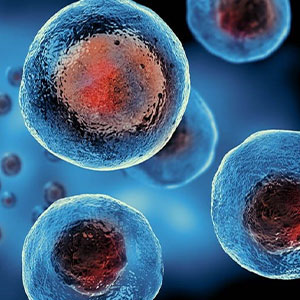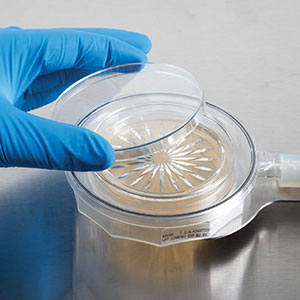courtesy of Particle Measuring Systems
 Abstract
Abstract
Stem cell therapies are becoming more important in the pharmaceutical industry. The genetic manipulations of the cells involved create a powerful tool to treat serious diseases, such as cancer. In 2017, the Food and Drug Administration (FDA) made several advancements towards the regulation of stem cell therap
- Published perspective on stem cell therapy in the New England Journal of Medicine
- Increased regulation enforcement for stem cell clinics
- Released new guidance, Regulatory Consideration for Human Cells, Tissues, and Cellular and Tissue-Based Products: Minimal Manipulation and Homologous Use
To regulate this industry, the FDA uses a risk-based enforcement approach with considerations for how and why the products are used. FDA’s discretion for how regulations will be enforced ends November 2020. Companies responsible for ensuring full compliance should contact the FDA before the cutoff to remove uncertainty regarding the regulatory status of their products and to determine whether the products are subject to premarket approval. FDA guidances are intended to help bring innovative, safe, and effective products to patients as efficiently as possible
Bacterial Infections after Stem Cell Product Usage
In early 2019, the Centers for Disease Control and Prevention (CDC) reported bacterial infections after use of stem cell products1, and are currently investigating the ReGen Series. The FDA inspection of the ReGen product manufacturer found problems with its process, including that the facility had not screened the umbilical cord blood donors for diseases such as HIV, hepatitis B, and hepatitis C. Patients reported symptoms of pain, swelling, and chills within a few days of receiving the stem cell product, which was later recalled.
The European Medicines Agency (EMA) released their point of view on stem cell medicinal products in 20112. This documentation is used in conjunction with previously published guidance, EMEA/CHMP/410869/2006, which addresses general aspects of cell-based medicinal products. For genetic modification of stem cells, consult the draft guideline EMA/CHMP/GTWP/671639/2008.
Background on Stem Cells
Stem cells are naturally occurring cells in the body that have the ability to divide and produce a range of different cell types. They are important in the growth and development of the body as well as repair after injury. The past few years have brought a dramatic increase in the body of knowledge concerning stem cells, and their research and investment into uses in medicines 3.
Stem cells are categorized as Advanced Therapy Medicinal Products (ATMPs) when undergoing substantial manipulation or when used for a different essential function. ATMPs are medicines for human use with gene, tissue or cell components. They can be classified into gene therapy medicines, somatic-cell therapy medicines, and tissue-engineered medicines, depending on how the medicine works in the body3.
This paper also covers:
- Current EMA Standards for ATMPs
- Risk Assessment
- Personnel
- Manufacturing Clean Area Systems
- Storage System
- Aseptic Process Simulation
- Quality Control
- Viable and Total Particle Monitoring

